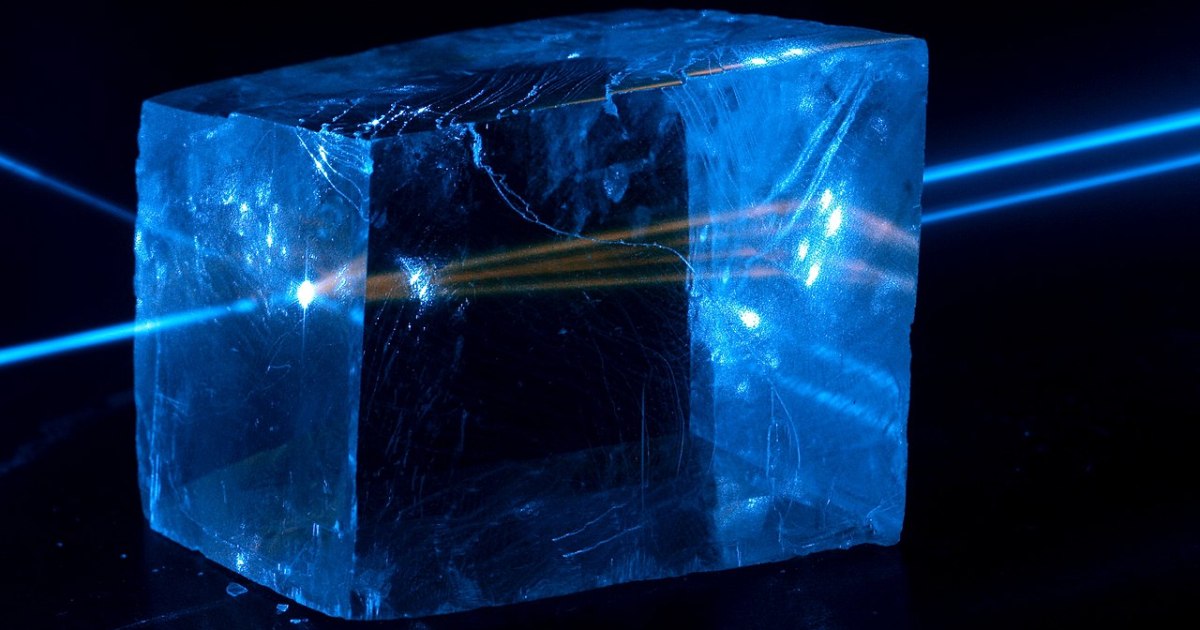Stryder50
Platinum Member
- Thread starter
- #121
Archiving this here for now. Main point is in the excerpt of the concluding paragraphs and what they say about "peer reviewed".
...
So, that was "Threshold," a story that's still recapped in retrospective articles, in conventions ... and in the American Research Journal of Biosciences. Because in 2018, a scientist calling himself Lewis Zimmerman submitted a paper about the episode, titling it "Rapid Genetic and Developmental Morphological Change Following Extreme Celerity."
This paper was not some kind of exploration of real-world science through the lens of Star Trek—if it sounds like "Threshold" used any real-world science, we did a bad job recapping it. Instead, Zimmerman claimed to have forced two actual research subjects into Warp 10, resulting in the "spontaneous exfoliation of skin cells," "internal morphological differences," and "measurement of heart number increasing two-fold" (i.e., each subject grew a second heart, like Tom did in Star Trek). Zimmerman also claimed, just like in the episode, to have let the research subjects breed, resulting in "three viable, motile progeny."
Why did this journal print this nonsense? Because this journal, like several others, publishes whatever people submit without reviewing it, asking just for a fee. Zimmerman's goal here was to expose the fraudulent scientific publishing industry. It's a wide problem, one we've talked about before. Zimmerman (whose true name remains undisclosed, for his own protection), joins the ranks of several other crusading trolls, such as the guy who successfully managed to publish a paper on the power of midi-chlorians.
...
...
The Hero Scientist Who Passed Off A Star Trek Episode As A Scientific Paper
...So, that was "Threshold," a story that's still recapped in retrospective articles, in conventions ... and in the American Research Journal of Biosciences. Because in 2018, a scientist calling himself Lewis Zimmerman submitted a paper about the episode, titling it "Rapid Genetic and Developmental Morphological Change Following Extreme Celerity."
This paper was not some kind of exploration of real-world science through the lens of Star Trek—if it sounds like "Threshold" used any real-world science, we did a bad job recapping it. Instead, Zimmerman claimed to have forced two actual research subjects into Warp 10, resulting in the "spontaneous exfoliation of skin cells," "internal morphological differences," and "measurement of heart number increasing two-fold" (i.e., each subject grew a second heart, like Tom did in Star Trek). Zimmerman also claimed, just like in the episode, to have let the research subjects breed, resulting in "three viable, motile progeny."
Why did this journal print this nonsense? Because this journal, like several others, publishes whatever people submit without reviewing it, asking just for a fee. Zimmerman's goal here was to expose the fraudulent scientific publishing industry. It's a wide problem, one we've talked about before. Zimmerman (whose true name remains undisclosed, for his own protection), joins the ranks of several other crusading trolls, such as the guy who successfully managed to publish a paper on the power of midi-chlorians.
...
:extract_focal()/https%3A%2F%2Fhips.hearstapps.com%2Fhmg-prod.s3.amazonaws.com%2Fimages%2Fegg-cracked-1608751182.jpg%3Fresize%3D640%3A*)
:extract_focal()/https%3A%2F%2Fs3.amazonaws.com%2Fpocket-collectionapi-prod-images%2F5ed0b7b4-d0c5-44a2-af86-418fdc23bc14.jpeg)


:extract_focal()/https%3A%2F%2Fpocket-syndicated-images.s3.amazonaws.com%2Farticles%2F7978%2F1655872315_GettyImages-521442940.jpg)
:extract_focal()/https%3A%2F%2Fhips.hearstapps.com%2Fhmg-prod.s3.amazonaws.com%2Fimages%2Fscreen-shot-2020-12-16-at-11-13-34-am-1608135284.png%3Fcrop%3D1.00xw%3A1.00xh%3B0%2C0%26resize%3D640%3A*)
:extract_focal()/https%3A%2F%2Fi0.wp.com%2Fdariusforoux.com%2Fwp-content%2Fuploads%2F2018%2F09%2Fhabits-return-on-life.png%3Ffit%3D665%252C499%26ssl%3D1)


:extract_focal()/https%3A%2F%2Fpocket-syndicated-images.s3.amazonaws.com%2Farticles%2F8106%2F1659650760_62ec41fa76fd3.png)

:extract_focal()/https%3A%2F%2Fs3.amazonaws.com%2Fpocket-syndicated-images%2Farticles%2F2834%2F1577993512_featured_art_news_scientist_jenice-kim.jpg)